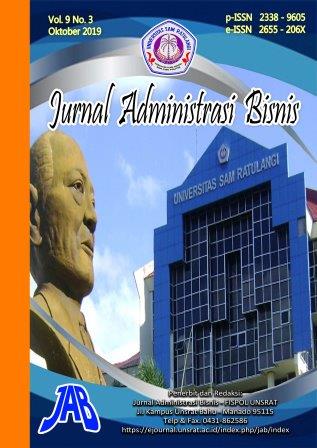Pentingnya Modal Kerja Dalam Meningkatkan Usaha Nelayan Di Kampung Ngalipaeng II Kecamatan Manganitu Selatan Kabupaten Kepulauan Sangihe
DOI:
https://doi.org/10.35797/jab.v9.i3.112-121Keywords:
Ngalipaeng II Village, Working Capital, FishermanAbstract
The purpose of this study was to determine the business conditions of fishing communities in Ngalipaeng II village. This research is a type of qualitative research. In coastal communities, traditional fishermen are the most suffering, poor and often the victims of the marginalization process due to fisheries modernization policies. In general, the so-called traditional fishermen are fishermen who utilize fishery resources with traditional fishing equipment, small business capital, and relatively simple fishing organizations. In general, fishermen still experience limited fishing technology. With a simple fishing gear, the operational area becomes limited, only around the coastal waters. Another problem is that access to markets is often not owned by fishermen, especially fishermen who live on small islands. Meanwhile, the condition of fish that easily rot, is a big problem faced by traditional fishermen. The income earned by these fishermen is generally used to fulfill the basic needs of family members. The basic needs that are intended in this case are food, clothing and housing as basic needs that are very important for survival, as well as social needs such as activities for merry, thanksgiving and others. Many fishing communities have not been able to meet the needs of household life, education, and other needs. Because given the results of fishing businesses that are so low / less because of limited costs and working capital.
References
Sastrawidjaya. (2002). Nelayan Nusantara. Pusat Riset Pengolahan Produk Sosial Ekonomi Kelautan dan Perikanan: Jakarta : PPM
Nitisusastro, M. (2009). Kewirausahaan & Manajemen Usaha Kecil, Penerbit Alfabeta Bandung
Perry, M. (2002) Mengembangkan Usaha Kecil, Penerbit PT. Rajagrafindo Persada, Jakarta
Ginting, D. (1996). Pengelolaan Sumberdaya Wilayah Pesisir dan Lautan secara Terpadu, PT. Pradnya Paramita, Jakarta, 305 hal.
Dahuri, R. (2000), Pembangunan Kawasan Pesisir dan Lautan, Tinjauan Aspek Ekologis dan Ekonomi. Jurnal Ekonomi Lingkungan.
Dahuri, R. (2003), Paradigma bans Pembangunan Indonesia berbasis Kelautan. Orasi Ilmiah : Guru besar tetap bidang pengelolaan sumberdaya Pesisir dan Lautan Fakultas Perikanan dan Ilmu Kelautan Institut Pertanian Bogor.
Gunarso, W. (1985). Tingkah laku Ikan Dalam Hubungan Dengan Metode dan Taktik Penangkapan. Jurnal Pemanfaatan Sumberdaya Perikanan Fakultas Perikanan IPB, Bogor. 43 hal.
Haluan, J, dan Nuraeni, T.W., (1988). Penerapan Metode Skoring dalam Pemilihan Teknologi Penangkapan Ikan Yang Sesuai Untuk Dikembangkan Di Suatu Wilayah Perairan, Bulleting Jurusan PSP, IPB Bogor, Volume II, No. 1; 3 - 16
Kusnadi, (2000), Nelayan : Strategi Adaptasi dan Jaringan Sosial, Bandung : Humaniora Utama Press.
Kusnadi, (2009). Keberdayaan Nelayan dan Dinamika Ekonomi Pesisir, Yogyakarta; Ar,Ruzz Media.



